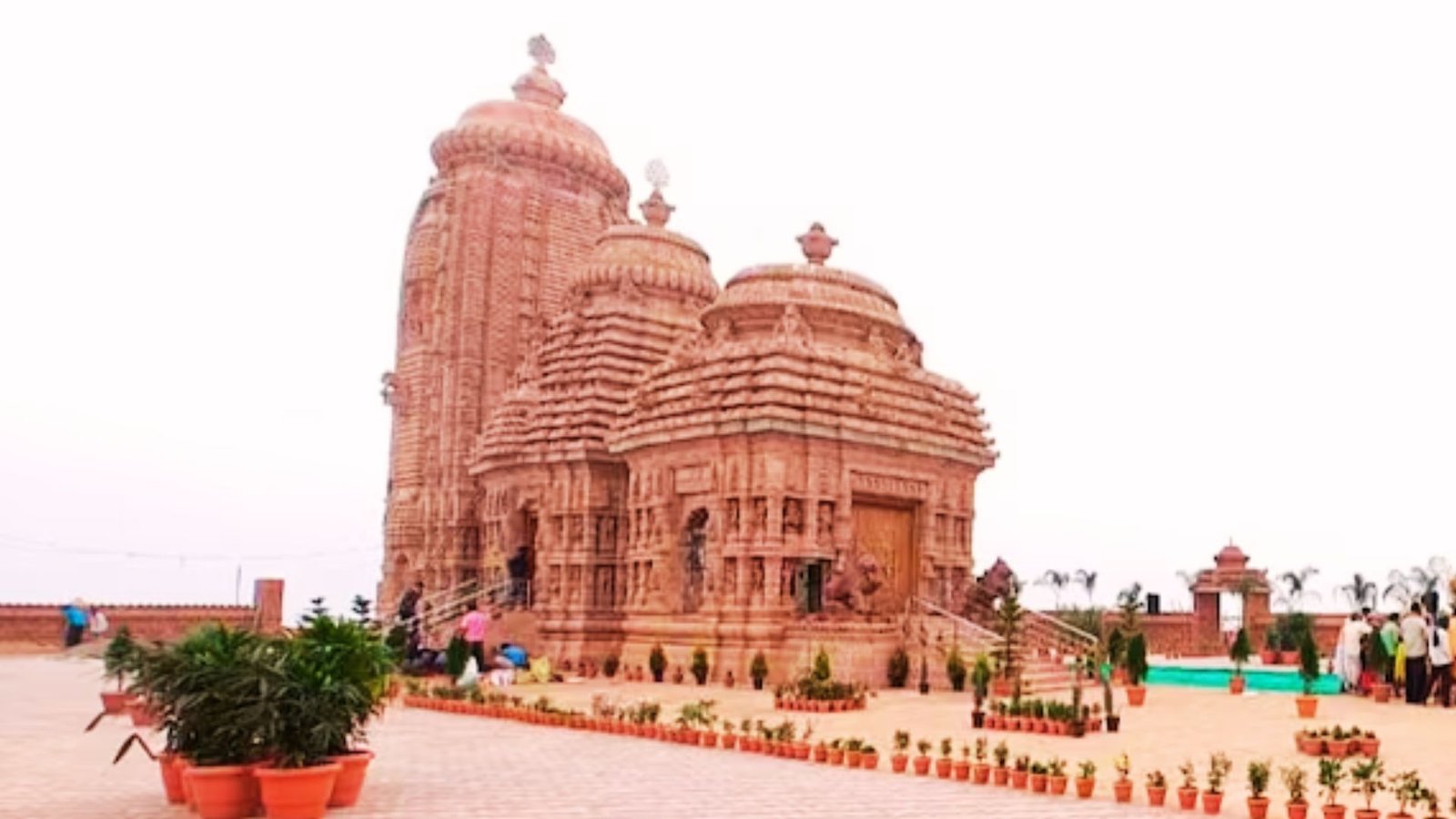the entire nation has been immersed in joyous celebrations, especially with the grand inauguration ceremony of the Ram Mandir in Ayodhya. However, on the other side, Odisha witnessed a double celebration on this auspicious occasion. Approximately 90 kilometers away from Bhubaneswar, in the village of Fatehgarh in Nayagarh district, stands a majestic Ram Mandir, soaring 73 feet high.
Architectural Resemblance to Ayodhya
The striking feature of this temple is its external structure, mirroring the architectural grandeur of Ayodhya’s renowned Ram Mandir. The inauguration and consecration ceremonies coincided with the festivities in Ayodhya during the Pran Pratishtha Utsav of Ramlala on a Monday. The three-day Yajna held in the temple added to the sacred atmosphere, culminating in the Purnahuti on January 24th.

Divine Presence
The sanctum of the temple houses magnificent 5.5 feet high idols of Lord Rama, Sita, and Lakshmana, brought all the way from the state of Rajasthan. The meticulous craftsmanship reflects not only the devotion of the sculptors but also the cultural exchange embedded in the spiritual essence.
Construction Journey
The journey of constructing this grand temple began in 2017, with the dedicated efforts of 100-150 individuals who toiled tirelessly for four years. The construction followed Odisha’s traditional architectural style, resonating with the likes of the Tara Tarini Temple and the Konark Sun Temple.

Unique Odisha Architecture
The design, inspired by Odisha’s ancient architectural style, is a harmonious blend of artistic brilliance and cultural heritage. The Garbhagriha, standing at an impressive height of 65 feet, stands as a testament to the rich legacy of Odisha’s temple architecture.
Spiritual Environs
Surrounding the main temple are four smaller shrines dedicated to Surya Dev, Lord Shiva, Ganesha, and Hanuman. Each of these temples serves as a sacred space for devotees, adding to the spiritual ambiance of the location.
Historical Roots
The site of the temple holds deep historical roots, revered by the local community. During times of drought, people have been offering prayers at this location for centuries. In ancient times, it was known as Giri Govardhan, emphasizing its significance in local folklore.
In conclusion, the grandeur of Odisha’s Ram Mandir stands as a testament to not only religious fervor but also the rich cultural tapestry woven through centuries. The architectural brilliance, combined with the spiritual significance, creates a harmonious space for devotees to connect with divinity.
FAQs
- Q: How does the architecture of Odisha’s Ram Mandir resemble Ayodhya’s counterpart?
- A: The external structure mirrors the grandeur of Ayodhya’s Ram Mandir, creating a visual connection.
- Q: What is the significance of the idols brought from Rajasthan?
- A: The idols of Lord Rama, Sita, and Lakshmana carry cultural importance, hailing from the state of Rajasthan.
- Q: How long did it take to construct the temple, and who were involved?
- A: The construction spanned four years, with the dedicated efforts of 100-150 individuals.
- Q: Are there other temples surrounding the main Ram Mandir?
- A: Yes, there are four smaller shrines dedicated to Surya Dev, Lord Shiva, Ganesha, and Hanuman.
- Q: What is the historical significance of the temple site?
- A: The site, known as Giri Govardhan in ancient times, has been a sacred place for centuries.

